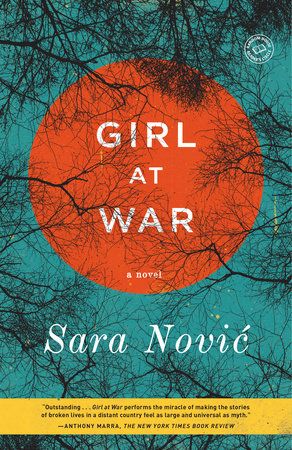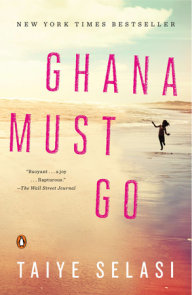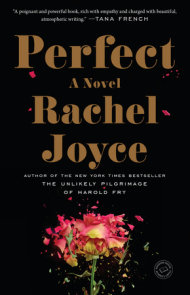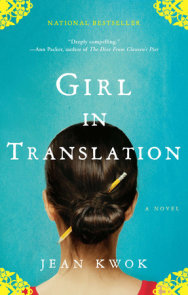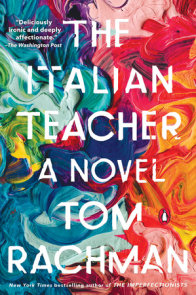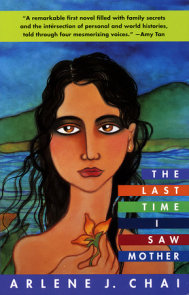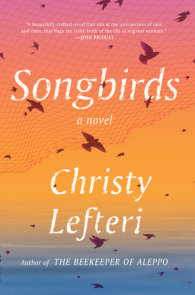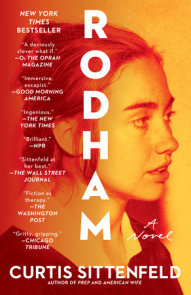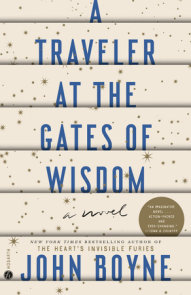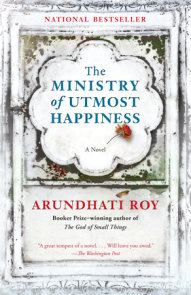READERS GUIDE
A Conversation BetweenSara Nović and Julia Glass
Julia Glass is the author of the novels And the Dark Sacred Night, The Widower’s Tale, The Whole World Over, and the National Book Award–winning Three Junes, as well as the Kindle Single “Chairs in the Rafters.” Her third book, I See You Everywhere, a collection of linked stories, won the 2009 John Gardner Fiction Book Award from the State University of New York at Binghamton. She has also won fellowships from the National Endowment for the Arts, the New York Foundation for the Arts, and Harvard University’s Radcliffe Institute for Advanced Study. Her essays have been widely anthologized, most recently in Bound to Last: 30 Writers on Their Most Cherished Book, edited by Sean Manning, and in Labor Day: True Birth Stories by Today’s Best Women Writers, edited by Eleanor Henderson and Anna Solomon. She is a co-founder and literary director of the arts festival Twenty Summers, in Provincetown, Massachusetts, and has taught writing workshops at programs ranging from the Fine Arts Work Center in Provincetown to the MFA program at Brooklyn College. Glass lives with her two sons and their father on the North Shore of Massachusetts.
Julia Glass: It is electrifying to see the words girl and war together in a title—and terrifying, too, of course. Equally chilling is the heroine’s statement that “there’s no such thing as a child soldier in Croatia. . . . There is only a child with a gun.” That made such an impact on me. Because Ana’s point of view is so intimate and her everyday life, first as a child and then as a young woman, is so palpable, I’m sure that every reader’s first question is this: How autobiographical is Girl at War? Did Sara Nović live a version of Ana’s nightmare herself? Of her escape and recovery?
If not—and I note from your biography in the book that you were half Ana’s age when that war began—was your family living in Zagreb? What are your earliest memories of the war or its effects on your daily life? The details of day-to-day living are so poignant and vivid in the book’s earliest chapters: the way school and jobs and even the rituals of children at play persist despite the threat of sudden violence, the way parents try to maintain a sense of normalcy. Where did those details come from, if not your own experience?
Sara Nović: First, thank you, Julia, for reading the book and asking me these interesting questions. Having grown up in the United States myself, the short answer is that Girl at War isn’t autobiographical. Ana’s story isn’t my experience, or any one person’s. The genesis of the novel came about when I went to live with some family and friends in Zagreb after I graduated high school. I think because I represented a kind of “middleman” to them—American, but still family—they were eager to share their experiences with me. This was in 2005, so the war had been over for a few years, and people were feeling disillusioned by the lack of intervention and aid from the West, and by the new democratic government that was shaping up to be corrupted, just as the old one had been. There was a sense of urgency in these stories, and a feeling that people wanted their voices heard. I’ve always been an avid journaler, so I recorded a lot of the anecdotes people told me right away. The opening scene with the cigarettes, for example, was an experience that happened to a friend of mine pretty much exactly as Ana experiences it.
Later, when I went back to the United States and started college, I was shocked to find that most of my peers didn’t know where Croatia was, never mind what had happened there. So I started writing a short story about the war for a creative writing class in which I had accidentally enrolled. My professor encouraged me to expand on the topic, so I kept writing out in all directions, and that story lies pretty much intact at the end of Part I of the novel now. Along the way I continued to ask a lot of questions of my friends and family back in Croatia—two of them were very good readers for me throughout the process of writing this book—and that, along with a lot of more “traditional” research, was how I made sure the details were accurate, which, even though the book is fiction, was important to me, given the gravity of the conflict.
JG: During the years of the Yugoslavian Civil War, I was in my mid-thirties, and news coverage of the atrocities against Muslims and other civilians was prominent in The New York Times and other Western papers. As an American, I felt a sense of futile rage over the lack of intervention by European and American powers—but I also felt confused. I did not feel I could fully grasp the complex hostilities and ethnic biases fueling the war, which was clearly about more than disputed territory. Do you think most Westerners understood the war? What might surprise us most to learn about that conflict? What misconceptions do we have?
SN: I don’t think most Westerners understood the war in Yugoslavia—the conflict was really complex and to grasp it fully would require a nuance that the mainstream media rarely provides. One of the big misconceptions about the conflict is the idea that it was an entirely ethnicity-fueled war. On the one hand, it was about ethnicity, because there were territories that contained ethnic majorities; however, like any war, this one was mainly about power and money. For example, one big point of contention was road construction—the capital of Yugoslavia was in Belgrade, Serbia, so most of the country’s money went toward building roads horizontally so Serbs could get to the Adriatic Sea, while travel vertically within Croatia and Bosnia was very difficult and nothing was being done about it. It sounds mundane, but I think that kind of thing was at least as much of a factor in the split as the ethnic tensions were, though the media only focused on the latter part because it made an easier and more sensational story.
JG: In Girl at War, there is a clear before and after—with devastating heartbreak and danger in the middle. Some readers would call it a loss-of-innocence story as much as a war story. (Or maybe that’s true of all war stories.) Certainly, I would call it a story about how human beings endure, even find a way to thrive, in the face of inconsolable loss; that’s what all the best fiction shows us. Do you still have family in Croatia or elsewhere in the former Yugoslavia? Do you return there now, and how do people say their lives have changed? Is it ever possible to feel safe in a place where formerly peaceful neighbors turned against one another so violently?
SN: I still have family and friends there and I try to go back in the summers, though I’ve missed this year. Croatia is now a very popular hot spot for tourists from around the world, particularly because of the Game of Thrones craze (they film some of the show there). The coast of the Adriatic Sea is so beautiful; it’s sometimes hard to believe that a war took place there so recently. Overall, I don’t think people really feel unsafe in the sense that they fear their neighbors—you probably couldn’t get on with your daily life if you thought about that too much. But there are times when tensions flare up—for example, when Russia recently vetoed the United Nations resolution to commemorate the murder of more than eight thousand civilians at Srebrenica as a genocide. In many respects, it’s still a time of transition. They’re still counting and documenting the names of the missing and the dead. They’re still de-mining the more rural areas, removing undetonated cluster bombs. I think the way in which these wars are written about in the history books for the upcoming generation will really dictate a lot about the future of all the ex-Yugoslavian countries.
JG: Along with her reluctant testimonial at the United Nations, Ana’s experience of living in the aftermath of 9/11 in New York takes her back to her war experiences, and it seems as if she feels even more estranged from her adoptive country as a result. I love the passage where she reflects, “The country was at war, but for most people the war was more an idea than an experience, and I felt something between anger and shame that Americans—that I—could sometimes ignore its impact for days at a time. In Croatia, life in wartime had meant a loss of control, war holding sway over every thought and movement, even while you slept.” Can you talk about what it means to you to be an American at this moment in time? Do you feel a sense of obligation to write about that?
SN: Americans have the privilege of distancing themselves from war, which is of course due in large part to our physical distance from everybody else. Because of that, I think the natural tendency of a lot of people is to actively avoid talking about wars “over there”—it seems like the average American feels like it doesn’t concern him or her. But that wouldn’t make sense for a character like Ana, not when war is on her mind constantly, and the differences between experiencing war in Croatia and experiencing it in America are so striking. When I workshopped a draft of this manuscript during my MFA program, I remember someone questioning whether I was “allowed” to write about 9/11. That floored me—wouldn’t it be way worse to have a character who had experienced a war in childhood, and was then in New York City on September 11, and say nothing about it? I think I do feel a sense of obligation to write about these things, in this case for the purpose of making Ana a full and complex character. But in general it’d be beneficial if more Americans wrote about what it means to be an American today—that would require an examination of our personal and collective actions, which is always a good thing.
JG: I have also been confronted with the illogical notion that fiction writers are somehow forbidden to write about current events as cataclysmic as the terrorist attacks on 9/11. But if this is the stuff of our own lives—or even if we have merely imagined what it would be like to experience such a crisis—of course it belongs in our stories! In fact, I’ve noticed that a lot of powerful “war fiction” is being published these days—some of it by young veterans, even spouses of veterans, but some of it also by writers whose only “qualification” is an astute imagination. You have to wonder if this literary trend is in part a reaction to the national tendency to avoid talking about these distant wars, even when they are of our making. Never mind that newspaper headlines are relentlessly dominated by wars all around the world: civil wars, wars on terror, wars fought in part by children, wars where “allies” and “enemies” are not at all clear-cut. Just to name a few powerful recent books, I’m thinking of To the End of the Land, What Is the What, Billy Lynn’s Long Halftime Walk, You Know When the Men Are Gone, The Yellow Birds, and Redeployment. Extraordinary new stories are also being written about past wars: Nostalgia, Matterhorn, The Sojourn. I’m just scratching the surface. Can I ask if you feel like a part of this wave—and if you’ve read a lot of fiction about contemporary conflicts? What other fiction writers, in general, have made the greatest impression on you?
SN: I didn’t really think of how I fit into a particular category while I was writing the book, in part because I was just so focused on Ana’s individual story, and in part because I didn’t really think of myself as a “writer,” or consider that this was a thing I’d try to publish, until I’d written well over half of it. That said, like Ana, I was lucky to have a couple of professors at college who fed me books, so I’d read Aleksandar Hemon and Dubravka Ugrešić in the early days of writing this manuscript. Peter Maass’s Love Thy Neighbor, a nonfiction account of the conflict in Bosnia, and Ishmael Beah’s memoir about child soldierdom in Sierra Leone also influenced this project early on, as did some authors of Holocaust literature, like Primo Levi and Tadeusz Borowski. And of course Rebecca West and W. G. Sebald play a big part in Ana’s development, as they did for me as a reader and writer.
One of my favorite writers unrelated to this project is probably Zadie Smith—I admire and envy how she weaves together such big stories with so many moving parts, and is simultaneously clever and funny. And lately I’ve loved Elena Ferrante’s Neapolitan novels—now there’s a woman who knows her way around a narrative!
JG: I’m glad you brought up Sebald. When we meet Ana in New York, where she’s studying literature at New York University, you mention Austerlitz, along with other writing on the subject of “displaced persons.” Do you see yourself as displaced? Was writing Girl at War a way of trying to find your place?
SN: I think that writing Girl at War was me trying to find my place in the way that an eighteen-year-old (my age when I wrote that first story) writing anything is doing it to better understand him- or herself. I do identify with Ana in feeling “in between,” though for me this comes more from falling between the Deaf and hearing worlds and languages. I lip-read well and can often pass in the hearing world, but I feel more comfortable in the Deaf world, where I can access one hundred percent of what’s being said via American Sign Language (ASL). However, at the same time, I spend so much time immersed in English—speaking, writing, and teaching—that it’s often the language in which I have my more complex thoughts, and on the bad days, this feels more like having no intellectual home than having two.
JG: our editor did mention to me that you lost your hearing at a young age. Speaking from my own experience, I know that the ways in which I listen to and hear the world around me—and I’m not just talking about dialogue—feel indispensable to my relationship with language and even to my imagination. Would you talk about how, if at all, you think you write differently from hearing writers?
SN: I think I probably do write differently than hearing writers, though I suppose I can’t know exactly how, because I don’t know what I don’t know—if that makes any sense. I’d venture to guess that I pay closer attention to small visual details; I’ve gotten comments from a lot of readers that Girl at War is “cinematic,” and I think this has to do with all the action and movement, and the way in which I take in the world visually. My editor, David Ebershoff, and I were talking about this once, and he commented on the fact that it was odd how, though I’m Deaf, my writing on the sentence level has a strong rhythm. But I think that’s because of my deafness—rhythm is the component of sound I still access just as much, or more, than a hearing person.
JG: When you sit down to write, what is your favorite part of getting down your stories? Do you have any special rituals or routines?
SN: I’m not a planner, so I think my favorite part of writing is the moment when I get to see what a character will do next. And I don’t mean that in a wishy-washy, “a character takes on a life of her own and I just sit back and watch” kind of way, because writing is hard work, not magic. It’s more about the moment when a character is developed to the point where her actions and the subsequent narrative become inevitable.
In terms of routine and ritual, I write by hand, and usually in a public place. I wrote a lot of Girl at War on the New Jersey Transit train when I was commuting between Philadelphia and Columbia University in New York City. Trains are great because you can’t go anywhere and procrastinate, so you have to keep your butt in the seat and work. On rare occasions when I am writing at home, it usually turns into cleaning the kitchen, or pacing around the apartment with my baseball glove. (Like Ana, I grew up a giant tomboy.) These moments don’t look like writing, but I sometimes find that the more fully I can craft an idea in my head, the less chance there is to hit writer’s block when I sit down to put it on paper.
JG: Those of us who loved this book are eager to know what you’re working on now. Do you think you will revisit the subjects and themes of Girl at War?
SN: Thank you. I’ve only just started working on a new project, so I don’t know much about it, but it follows several characters at a boarding school for the deaf in Kentucky. It’s been presenting me with all kinds of questions, like how to represent ASL on the page, which has been an exciting and frustrating challenge. I think writing about the Yugoslavian Civil War, and about the region in general, will always be important to me, but I’m looking forward to seeing what these new, American characters will get up to as well. And I’m looking forward to reading your next book, Julia.
————————————————————————————-
Sara Nović on What It’s Like
to Be a Deaf Novelist
My first novel has recently become an audiobook to which I will not listen. The characters have been assigned voices and accents and inflections that I’ll never hear. This is not a complaint, exactly; to have written a book that someone wants to publish in any and all formats is a writer’s dream. But to hold some disc or drive that contains a thing I made, transformed into a new thing I can no longer understand, is a predicament in which few writers find themselves.
This disconnect will appear with increasing frequency as I embark on a series of literary events following the launch of my novel. As an audience member, I have been to my share of readings in New York. I go because I am in love with books; I go to be with my friends. But, even as a spectator, I find that they require a lot of concentration, and sometimes, when I’ve worked myself into a cross-eyed headache, I turn off my hearing aids and dip below the surface of the sound, let myself drift in the quiet. At my own events I won’t have the choice to opt out.
So far I have read in public only three times, each distressing in the regular ways (an audience!), with the added terror of exposing an increasingly unknowable part of myself—my voice. I can feel my words in my chest and mouth, but I can’t be sure of what they sound like out in the world. As far as I’m concerned, my voice has no echo; it does not stick to the tape recording. What does it mean to perform for an audience with such limited control of your output?
Books have always provided me with a sense of solace and companionship when I find the hearing world overwhelming. Growing up, I filled notebooks with the things I was afraid to say aloud. Libraries, too, seem designed for me—places where one isn’t supposed to talk, equality granted under the rule of silence.
Since my hearing loss was progressive, I was educated in spoken English alongside my hearing peers; later, when that became too difficult, I learned American Sign Language (ASL) and used interpreters in class. When given a choice between the two, my preference by far is to use ASL, in which at least I do not feel self-conscious. But having been brought up in the hearing world with an English education, and now in turn writing and teaching in English, I spend much more time immersed in English than I do in ASL. My ASL is fluent, and I can dream and think in it, but it is not my primary thinking language.
In reality, the language—or linguistic modality—in which I am most fluent is written English. When I’m writing, my mind and body need not be translated for a hearing audience. I don’t worry that I am enunciating unclearly, that my lips and tongue will revert to their unpracticed ways under pressure, or that I’m speaking at the wrong volume for the background noise I’m unable to gauge. When I’m reading a book, I do not have to guess in the way that I do when lip-reading—paper never covers its mouth or turns its head.
And yet there is a disconcerting entanglement of speech and the practice of being a writer. I frequently see famous authors—Stephen King among them—advising that you absolutely must read your own work aloud in order to edit it properly. Without listening to your words in your own voice, these writers hold, you can neither fully understand what you’ve written nor hear how to fix it. At best this kind of advice leaves me feeling a little left out, but at worst, I wonder: Am I making mistakes a hearing writer wouldn’t?
Another part of writing that seems inextricable from hearing is rendering dialogue. Someone who writes dialogue well is said to “have an ear” for it. I don’t think I write dialogue well. Whether this is just your average writerly paranoia or is linked to the physiology of hearing loss, I can’t say. Relevant here is a cultural divide between the deaf and hearing worlds with regard to frankness. By nature of its visual modality, sign language is more direct than spoken language; there are no euphemisms in ASL. Further, the threshold for rude or inappropriate topics is much higher in the deaf world. Stemming perhaps from the days before SMS and email, when it was harder to keep tabs on a deaf person’s well-being, there is no shame in bluntly discussing one’s feelings, plans, and bodily functions with friends, or even acquaintances.
In the writing world, any trace of this directness translates as “bad dialogue.” “That’s not how people talk,” my workshop mates have said. And of course, they’re right.
In English the phraseology of silence and deafness overwhelmingly signifies the negative. To hear is synonymous with understanding—“I heard about that” or “I hear you” suggests the speaker’s knowledge about, comprehension of, or capacity for empathy on a given topic, whereas across the headlines, cries for justice or peace often “fall on deaf ears.” As long as deafness is a synonym for stupidity or willful ignorance, deaf/Deaf and signing people will continue to be “othered” into a position of inferiority. (The capitalized “Deaf” refers to those who associate themselves with the Deaf community; a minority are medically deaf but choose not to associate with that community.)
In the face of all this, it’s perhaps unsurprising that the works of fiction written in English by deaf/Deaf writers can be counted on one hand. It is important to note that sign languages have fostered a robust tradition of storytelling and slam poetry, but books written in English—many deaf/Deaf people’s second language—are few. On the other hand, this means the experiences of Deaf characters present a rich and relatively unmined cache of material with which to work. Plus, being a Deaf writer means I can write anywhere without being distracted—I wrote most of my first book while commuting on the New Jersey Transit Northeast Corridor rail line.
And while writing in a language that works against me can sometimes seem a less-than-ideal occupation, what is the job of a writer but to reinvent language, or at least to create the space and tools for the silenced?
I am reminded of Chinua Achebe quoting James Baldwin, who expresses frustration with the limits of the language: “My quarrel with the English language has been that the language reflected none of my experience. But now I began to see the matter in quite another way. . . . Perhaps the language was not my own because I had never attempted to use it, had only learned to imitate it.” Achebe goes on to say: “I recognise of course that Baldwin’s problem is not exactly mine, but I feel the English language will be able to carry the weight of my African experience. But it will have to be a new English.” And while Baldwin’s and Achebe’s problems were much bigger than mine is, I can look at the successes of these literary giants and extract a hope that English, with a little work, can carry the Deaf voice, too.
Questions and Topics for Discussion
1. This is a book about war as seen through the eyes of a young person, first as a child and then as a young adult. What are the benefits and drawbacks of having a child or young adult narrator? Imagine Ana in her thirties. How might she tell the story differently?
2. Ana’s father tells her the story of Stribor’s Forest after a particularly difficult day for the family. Do you see echoes of the story’s moral elsewhere in the book?
3. In what ways do storytelling or narrative become important for Ana?
4. The end of Part I features an aside about language—Ana says she grew up thinking all languages were ciphers, translatable by swapping out alphabets. Why is this important to the story? Why do you think Nović chose to include it during a moment of extreme violence?
5. Why do you think Nović chose to write the story in a nonlinear fashion? How would your reading experience have changed if the narrative had been chronological?
6. While testifying at the United Nations, Ana makes the statement that “there is no such thing as a child soldier in Croatia.” Given her experiences, what do you think she means?
7. A lot of minor characters help Ana to safety along the way; which one was your favorite, and why?
8. When Ana returns to Croatia, she and Luka wonder how long it takes to forget a war. What do you think?
9. How might the story have been affected by Ana and Luka becoming romantically involved?
10. How would you say Ana changed as a person over the course of the novel?
11. This story has in turns been classified as historical fiction, a war story, and a coming-of-age story. Which of these resonates most with you?
12. The novel’s conclusion is fairly open-ended. What do you think happens after the final scene?







